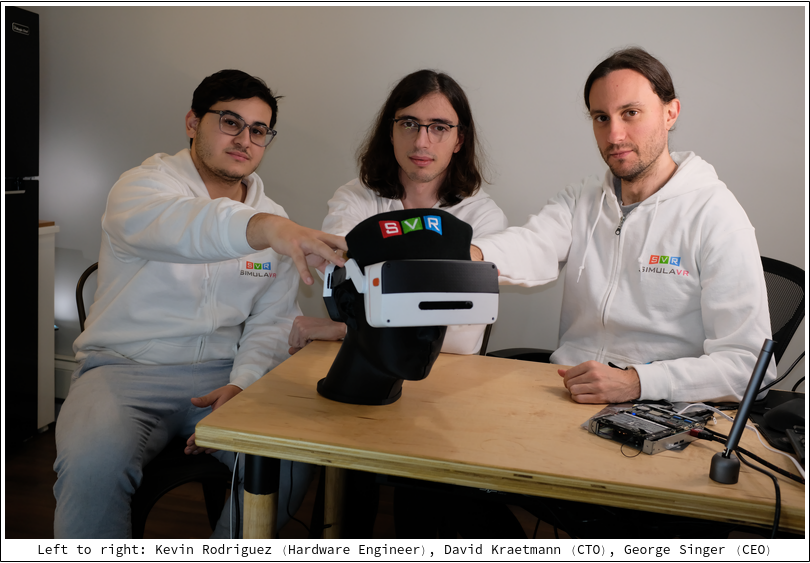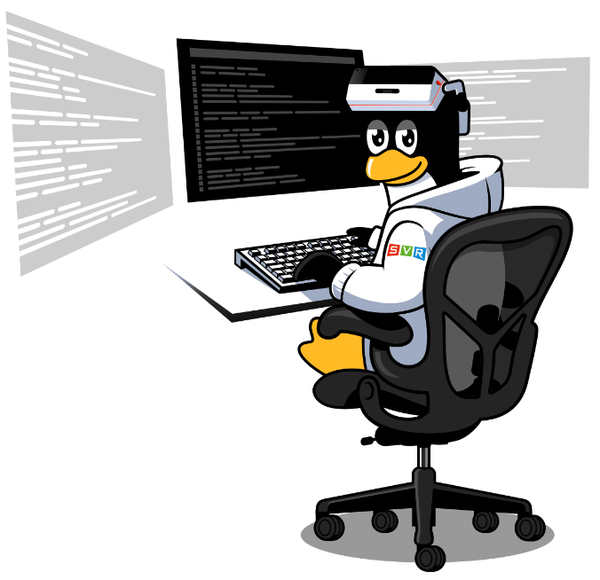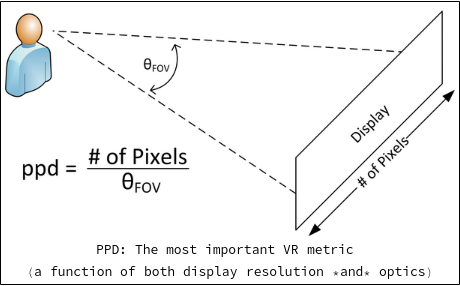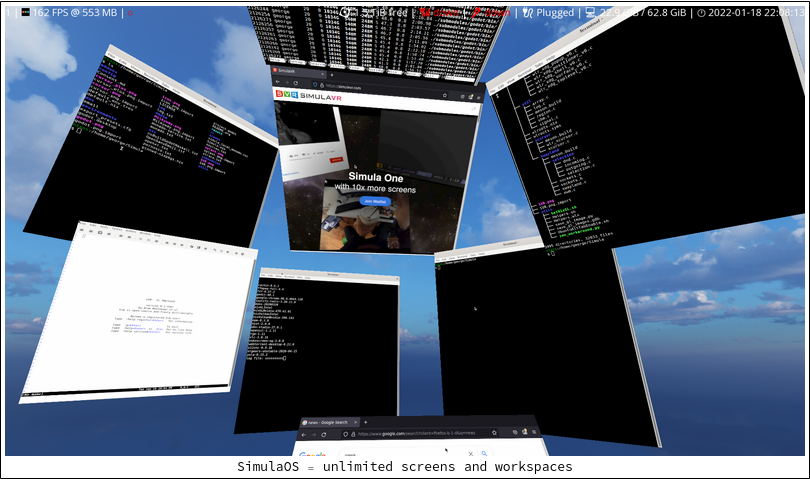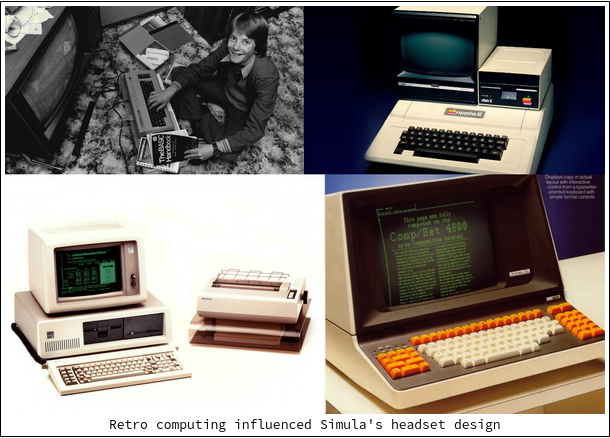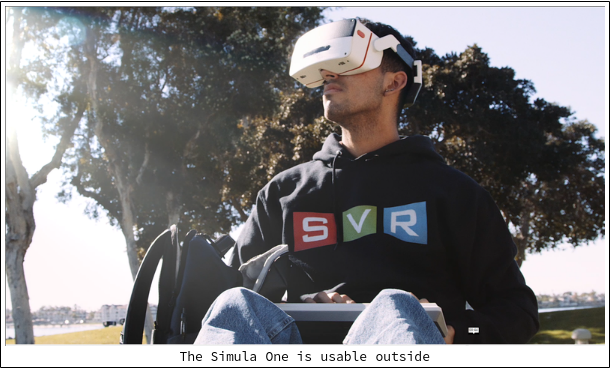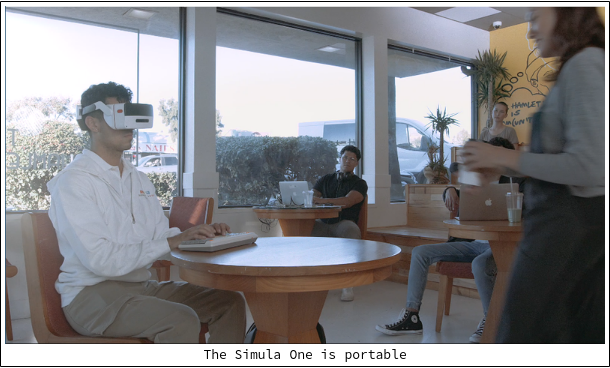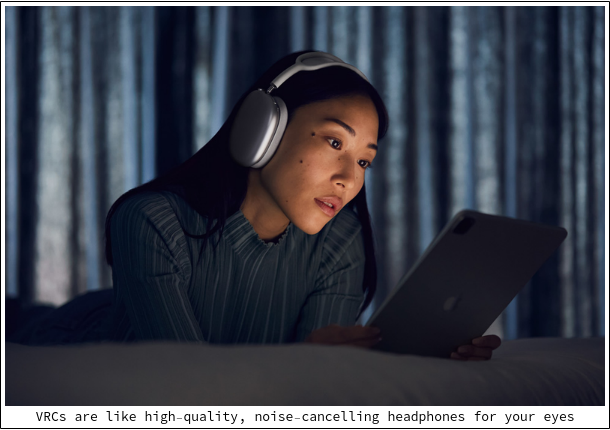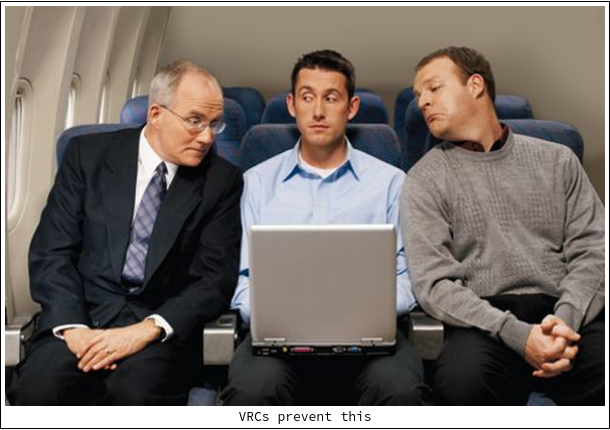Hi, my name is George (pictured right). I started SimulaVR back in 2017 with David Kraeutmann (pictured center). More recently, Kevin Rodriguez (pictured left) also joined our team. Together we are building the world's first Linux "VR Computer" (VRC), which will be available on Kickstarter in a few days.
Responsibilities of everyone:
- David is the real brains behind this project: responsible for all of the EE, and a good chunk of the project's software.
- Kevin is the real designer of our project, having fully designed our headset exterior & mechanics.
- I'm just a glorified cheerleader, who can occasionally code =]
<Maybe insert this video/GIF here>
SimulaVR is selling a portable VR headset (the "Simula One") which is primarily designed to help you work more productively. We call it a "VR Computer" (VRC) to distinguish it from other gaming headsets on the market, and it will be (AFAIK) the first portable VR headset intended primarily to replace PCs/Laptops for office work (Linux or otherwise).
Some features of the Simula One VRC:
- Linux. It runs a VR distro called "SimulaOS" (or "SOS"), which runs Linux Desktop applications in VR.
- Highest pixel density. It has a higher pixel density (PPD) than any other portable VR headset on the market. This is extremely important for maximum text clarity.
- Premium specs. It offers compute specs comparable to a premium office laptop.
- Supports tethered gaming. Though our headset is meant primarily for office work/programming, it can also be used in Tethered Mode for gaming (e.g., you can hook it up to a Windows/Linux PC and run SteamVR games). We are selling a Tethered-only version for people who just want this functionality.
When Simula was founded, most people thought that the future of VR/AR was in gaming and entertainment. The truth is that most knowledge workers will be computing in VR/AR instead of PCs/Laptops by the end of this decade. This is because VRCs offer incredible benefits over traditional PCs/Laptops:
- They provide unlimited screens.
- They provide more work focus & immersion (like "noise-cancelling headphones for your eyes").
- They make multi-screen computing fully portable.
- They're usable outdoors (no laptop glare).
- They give you more privacy (no one can snoop on your screen).
- They're more compact/take up less desk space.
- They promote better posture & freedom of movement: with a VRC you can change positions, sit up, lean back, stand, lie down, or even walk while you compute. We plan on providing keyboard aprons to help with this freedom of movement.
There is a need for VR Computers, first and foremost, but Linux provides a great way to build one =] Reasons for this:
- Optimizable for VR computing. The open-source/customizable nature of the Linux ecosystem is perfect when you're building something optimized from the ground up for VR Computing. For example, Linux gave us the ability to custom make our own VR window manager, build it on top of an open-source gaming engine, and then optimize its rendering specifically for text crispness.
- Superior OS. Linux is arguably the superior desktop OS: less crash-prone, less sluggish over time, more secure, easier to develop on, no annoying forced updates, and more helpful community.
- Open-minded early adopters. Linux users tend to be open-minded technologists, who are often willing to experiment with cutting edge technology for a better way of doing things.
- Free from other agendas. We didn't want to build a VR computing platform on top of another company's social network/gaming platform.
More speculatively, we believe the rise of VR computing could provide an opportunity for Linux to become dominant. An analogy: in 2003, most people believed that Windows and Palm were destined to control the mobile market, but instead an obscure Linux-based OS named Android (running on a small number of ultra-premium phones, like the T-Mobile Sidekick) actually beat them to it! We believe that something similar could happen with VR computing, but it will only be possible with the right group of early enthusiasts helping Linux VR get there early.
Headset specs.
- 35.5 PPD
- 2448x2448 per eye display resolution
- 100° FOV
- 90 Hz refresh rate
- 55mm-77mm IPD
- Features dual wide-angle high-resolution RGB cameras for AR passthrough
- Supports Tethered Mode for gaming on other platforms (Windows/SteamVR)
Detachable compute pack specs.
- i7-1165G7 Processor
- 16 GB Memory
- Iris Xe graphics
- 1 TB SSD
- Wi-Fi 6
- Bluetooth 5.2
- 3.5mm Audio Jack
- Exposed ports: 1x USB4 (including Thunderbolt 4), 2x USB-C 3.2 Gen 2/DP Alt-Mode, 2x USB-A 3.2
- Comes pre-installed with SimulaOS Linux VR distro
We highlighted our "35.5 PPD" spec, since to us it's the single most important metric for a VR Computer. PPD, which stands for "Pixels-Per-Degree", provides a standardized way of measuring how clearly (e.g.) text and other fine details are rendered in the headset. We are proud to offer a higher PPD any other portable VR headset.
SimulaOS is our VR Linux distro. Its main component is our custom VR window manager, which allows an unlimited number normal Linux Desktop apps to be launched in VR. Some of its features include:
- Unlimited windows and workspaces. This is useful for complex tasks that requires lots of different apps and views.
- Especially clear text quality. We apply a special low-pass filter to our rendering which makes text as clear as possible.
- 100% keyboard controllable. While Simula supports hand-gestures, VR controllers, and computer mice, it is built to be completely controllable by nothing more than a keyboard for maximum efficiency. Ex: you can move windows and mouse cursors around with just a keyboard shortcut and your eye gaze.
- Highly configurable. Everything is configurable (e.g., lots of customizable keyboard shortcuts) and open-source.
- Supports external monitors. SimulaOS is able to handle external monitors (for non-VR usage). E.g., you are able to dock the Simula One, plug in a monitor, and access your VR Computer outside of VR.
How has it been difficult to create a VR version of Linux? What strategies have you employed to develop it?
We have gone through several prototypes before landing on the codebase we have now.
The first iteration of Simula was an implementation fork of Forrest Reilling's "motorcar" project, which was the codebase for a VR window manager Forrest wrote for his Master's thesis (Toward General Purpose 3D User Interfaces: Extending Windowing Systems to Three Dimensions). In this thesis, Forrest argued that the best architecture for a 3D window manager was one that was built over the Wayland protocol. To this day, our window manager remains Wayland based (though supports X apps too). After moving through several failed prototypes and rewrites, we landed on the codebase we have today, which is built over the Godot game engine and Drew Devault's wlroots.
What can you do inside this device? From the website, it seems it lets you have your Linux windows, but in VR… something like Virtual Desktop. Is it possible to do something more? Can I launch some Linux VR games or 360 videos or something like that?
Our headset basically has two modes: "Portable Mode" and "Tethered Mode".
-
Portable Mode: This offers a purely a VR Linux Desktop experience. In this mode, you can launch an unlimited number of normal Linux Desktop applications in VR, including things like chrome, firefox, IDEs, spreadsheets, word documents, email clients, photo editors, and so forth. The general rule is: any 2D application that is capable of running on a premium office laptop (running Linux) will work in this mode. See our compute specs to get an idea for what kind of load the headset can handle.
-
Tethered Mode: You can use this mode for traditional VR gaming. Basically, you detach our compute pack and plug our headset into a traditional Windows/Linux PC with a more powerful GPU. This allows you to run (e.g.) SteamVR games as usual. You can also tether our headset to a more powerful Linux PC which is running Simula. This is useful if you want to use the Simula One for tethered VR computing, but want to provide your own Linux computing power.
We will be selling both the full headset (with the detachable compute pack) as well as a Tethered-only version on our Kickstarter.
Is SimulaVR standalone? If yes, how do you solve the problem of working with a keyboard and a mouse with it? Typing in VR is actually terrible
Our headset supports a toggleable "AR Passthrough Mode" (powered by two front-facing, high-res RGB cameras) which allows you to see your keyboard if you need to hunt for a specific key or your mouse.
SimulaOS is designed to be used with keyboard/mouse/hand gestures only, and doesn't support controllers. With that said, when our headset is used in "Tethered" mode for gaming, it will work with any controllers supported by OpenXR (e.g., Valve Index or HTC Vive controllers).
There is another interesting project in the community that is bringing a Linux emulator inside the Quest. What are the pros and cons of your approach with regard to the emulator one?
We're aware of a cool project which emulates a Linux TTY inside the Quest. This allows you to emulate Linux cheaply inside a low-cost headset (i.e. the Quest).
The pros of our project: we support multi-screen window management (not limited to a single emulator terminal). We have significantly better PPD/text quality, and support AR passthrough & other features optimized for VR computing.
Simula's software is open-source, under an MIT license. We're also planning to be reasonably open with our hardware to the extent that supplier laws allow.
Primarily it's for people who want to use VR as an intelligence amplifier/general purpose computing device. Our early users will most likely be pre-existing Linux users, and a lot will likely have already experimented with VR gaming before. With that said, our product is also for people who aren't necessarily interested in VR gaming, but just want to pull a headset out of a box, and start using it immediately as a PC/Laptop replacement without any setup friction.
Now it's time for a question some people actually asked me: Why in your promotional images there is a head cut off at the same height of the headset? Should we cut part of our brain to use Simula? :D
When we started designing the Simula One, we created a head model to serve as reference for fit testing, but ran out of filament right before the print finished. When we realized that the head model was still useful, we just rolled with it. No need to cut any brains =]
Price: Our Kickstarter price for the "Simula One" VRC is $2,799 (MSRP: $3,500). We're also offering a limited number of "Early Bird" units on Kickstarter for $2,499, as well as a "Tethered-Only" version of our headset for $1,999 (for those who want to use it for pure tethered gaming and/or who want to provide their own Linux compute). We understand these prices are high (due to high upfront costs and low economies of scale), and so are also offering some items for people who wish to support us in other ways (items include keyboard aprons, SimulaVR Tux plushies, and VR docking stations).
Kickstarter notification: If you'd like to be notified an hour before our campaign starts (to maximize your chances of getting Early Bird units), you can sign up to be notified an hour before our campaign launches.
Release: Our Kickstarter is launching at the end of this month (January). We expect units to start shipping in Q4.
We don't feel comfortable offering advice yet until we've actually accomplished our mission. After our VRCs ship, we'll be in a better spot to offer advice & perspective on what worked well and any lessons learned.
We are committed to offering weekly progress updates throughout the entirety of this project. If you're interested in reading them, you can sign up here.
Retro-computing influenced the design of the Simula One. During the early PC revolution, computing was not thought of as purely a vehicle for gaming, social networking, or entertainment. Early pioneers like Alan Kay viewed computing as a "tool for the mind" (or "Bicycle for the Mind", as Steve Jobs used to say), which had a bigger role in boosting human creativity than it did for providing pure entertainment. There was also a sense that computers were built for hackers and open-minded technologists, as opposed to mass market consumers.
While designing our VRC, we also wanted to harken back to a time when the Personal Computer was in its infancy, and the freedom of this ill-defined category allowed for more colorful and experimental designs to be brought to market.
Please provide me a headshot of yours, and some videos+images to add to the article. Thank you a lot!
https://www.wolframcloud.com/obj/george.w.singer/SimulaOne_rotation_rendered.avi
